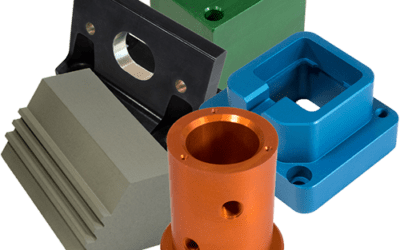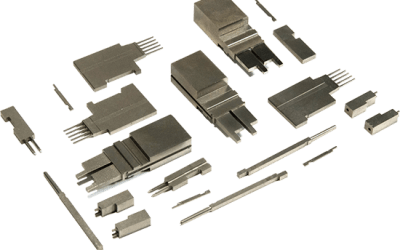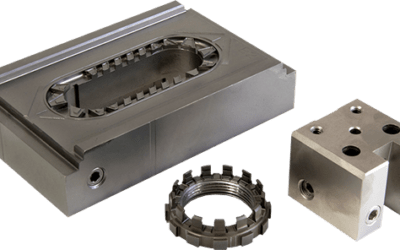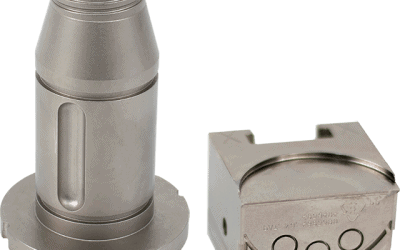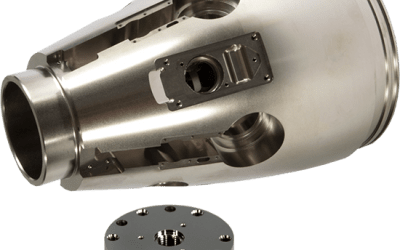Choosing Plated Coatings for Improved Mold Performance

As one might guess, there is no “one-size-fits-all” to mold coating, and different applications or situations call for different solutions. Even the most common coatings can cause issues during molding when used incorrectly, and unfortunately, these problems aren’t easy to resolve.
Plastic molds are liable to experience wear and corrosion from several sources, which can ultimately reduce the lifespan of the mold. Correctly plating molds can help you avoid this scenario while improving mold performance.
PFI offers a wide variety of plated coatings for molds, and we like to help our customers make an educated decision when choosing the best plated coating for their application.
How to Choose the Best Plated Coating for Your Plastic Mold
The first step to choosing the correct plating for your mold or mold components is to identify the problem you want to prevent. Common issues include:
- Mold flashing
- Abrasive wear
- Water contact on un-plated surfaces
- Seepage through porous metals
- Condensation
- Acid contact
| It’s beneficial to consult a professional when you are unsure of the cause of your mold’s damage; it can be particularly difficult to determine the source of damage in previously coated molds. |
Once you have determined the problems you wish to avoid (or rectify), it’s necessary to familiarize yourself with the basic types of mold plating. They are called “electrolytic plating” and “electroless plating.”
- Electrolytic plating uses electricity to fuse chrome onto the base metal of the part being plated. This plating is less uniform than its counterpart.
- Electroless plating is the opposite of electrolytic plating. This electricity-less application is achieved by using chemical adhesion rather than an electrical process. It provides the part being plated a more uniform coat and allows the coating thickness to be controlled within .00005 – .0001in.
Plated Coating Options for Plastic Molds | Nickel Coating & More
Mold coatings can make it easier for extruded materials to move throughout a mold, reducing cycle times by providing a quick release for the molded part. The best mold coating will not only make mold release easy, but will also reduce overall wear and tear on a mold. Options for plated mold coatings include:
- Dura Slick, PFI’s proprietary nickel base with a low coefficient of friction for excellent release.
- With a breakdown temperature of 1650 F, Dura Slick excels in applications that may suffer from common wear and galling issues, including the release of plastics and plastic molds.
- Lubricoat is comprised of nickel, phosphorus, Teflon, and lubricity-inducing polymers that assist in the release of plastic from the mold component.
- Lubricoat’s makeup contributes to its corrosion-resistant properties. An industry favorite, Lubricoat features a low coefficient of friction and a breakdown temperature of 650 F.
- Type 2 Anodizing is a type of sulfuric acid bath that has a transparent appearance or a variety of colors, including black, blue, gold, olive drab, red, and green.
- Type 3 Anodizing, PFI’s most requested industrial coating, Type 3 produces a non-conductive hard coat (.001 penetration into the substrate and .001 build-up).
Nickel Coating
Satin nickel plating offers superior corrosion resistance and lubricity. When used in plastic injection molds, the uniform plating job and a low luster appearance make coating many steel materials relatively effortless.
This type of plating will also ensure that your plated mold will not conduct any electricity as the solution seals off the substrate from the outside environment.
Additionally, PFI’s electroless nickel boron nitride coatings (EN-BN coatings) offer hardness and lubricity, as they are co-deposits of hard nickel and a boron nitride matric. These coatings showcase high resistance to wear and corrosion as well as an extremely low coefficient of friction.
PFI Offers Plated Anti-Corrosion Coatings to Improve Plastic Mold Performance
Choosing the most appropriate plating for your particular mold (and its condition) is critical in avoiding common types of wear and tear. Fortunately, PFI offers a multitude of plated coatings that can not only help mold release and stave off erosion, but ultimately improve the performance and longevity of your plastic mold.
Considering how many options are available, it is important to consider the properties and benefits of each of the plated coatings offered by PFI. If you are having difficulty choosing the best plated coating for your plastic mold, the expert staff at PFI can help you determine the best options for your application.
